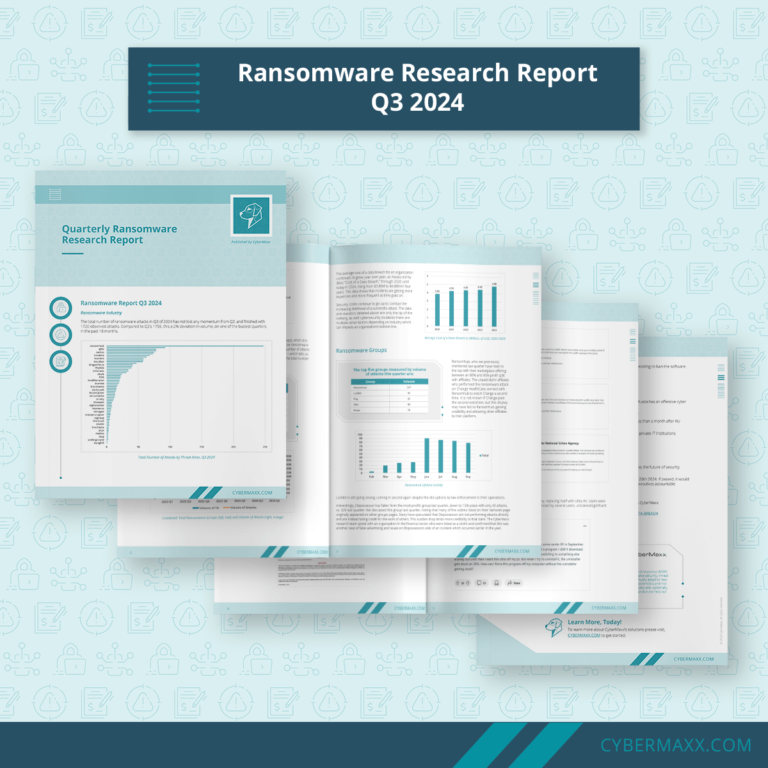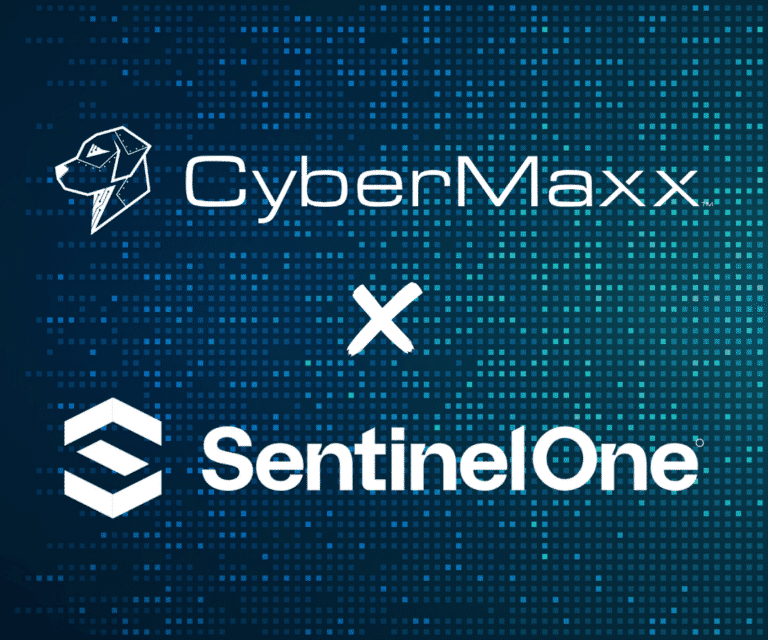Endpoint Detection & Response (EDR) is a critical element in safeguarding your organization’s cybersecurity and resilience. By utilizing advanced technology and sophisticated algorithms, EDR solutions provide real-time monitoring and threat detection on all endpoints within your network. This includes desktops, laptops, servers, and mobile devices.
The benefits and features of endpoint security are vast. With EDR in place, you gain unparalleled visibility into potential threats, allowing you to proactively respond to any suspicious activities or malicious behavior. Additionally, EDR offers rapid incident response capabilities that enable swift containment and remediation of threats.
When considering deployment options for EDR solutions, CyberMaxx stands out as a trusted partner. Their expertise in managing digital risk ensures the highest level of protection for your endpoints.
In today’s ever-evolving threat landscape, it is crucial to stay one step ahead of cybercriminals. EDR security plays a pivotal role in managing digital risk by providing continuous monitoring and proactive threat hunting capabilities.
To fortify your organization’s cyber defenses, implementing Endpoint Detection & Response should be your next logical step. It is an essential component that enhances both the security posture and resilience of your network infrastructure.
What is Endpoint Detection & Response?
Endpoint Detection & Response (EDR) is a vital component of cyber security and resilience, as it provides a proactive approach to detecting and responding to advanced threats.
Unlike traditional prevention-focused solutions, EDR focuses on detection, allowing organizations to quickly identify potential breaches or intrusions.
Key features of EDR include real-time monitoring, threat hunting capabilities, and the ability to analyze and correlate endpoint data to uncover hidden threats.
By incorporating EDR into your incident response plan, you can enhance your organization’s ability to detect and respond to cyber incidents effectively.
Detection vs Prevention
When it comes to protecting your digital assets, focusing solely on prevention is a dangerous gamble. Endpoint security requires a comprehensive approach that includes both detection and response capabilities.
While prevention aims to stop attacks before they happen, detection plays a crucial role in identifying and alerting you to potential threats. By combining these two components, you can effectively mitigate the risks posed by cyber attacks and ensure the resilience of your organization’s cybersecurity infrastructure.
Key Features & Benefits
To effectively protect your digital assets, it’s important to understand the key features and benefits of a comprehensive approach to securing your organization’s cybersecurity infrastructure.
- Endpoint detection and response (EDR) provides real-time monitoring and analysis of endpoint activities, allowing for rapid threat detection and response.
- EDR solutions offer advanced threat hunting capabilities, enabling proactive identification of potential security breaches.
- With EDR, organizations can gain valuable insights into attack patterns and trends, enhancing their overall security posture.
Role in Incident Response
By utilizing the comprehensive approach of endpoint detection and response, you can effectively enhance your organization’s incident response capabilities, allowing for swift identification and mitigation of potential security threats.
Endpoint detection response plays a crucial role in incident response by continuously monitoring endpoints for suspicious activities, analyzing behavior patterns, and providing real-time alerts.
This proactive approach ensures early detection of cyber threats and enables prompt actions to prevent further damage, thus strengthening overall cyber security and resilience.
Benefits and Features of Endpoint Security
Endpoint protection is a vital component of EDR security, offering real-time threat hunting capabilities and rapid detection response. With advanced monitoring, it actively scans for suspicious activities, identifies potential threats, and initiates immediate response actions.
This proactive approach ensures early detection and containment of cyberattacks, bolstering your overall security posture.
Deployment Options with CyberMaxx
CyberMaxx offers various deployment options that can effectively enhance your cybersecurity strategy and provide you with the necessary tools to protect your digital assets. Whether you choose on-premises, cloud-based, or hybrid deployment, CyberMaxx’s endpoint detection and response (EDR) solutions offer comprehensive protection against advanced threats.
With CyberMaxx’s deployment options, you can seamlessly integrate EDR into your existing security infrastructure and gain real-time visibility into endpoint activities, threat detection, and response capabilities.
- Simplify security management
- Improve incident response time
- Enhance threat intelligence sharing
- Streamline system updates and patches
- Optimize resource allocation for better performance
MDR Overview
Endpoint detection & response (EDR) is a vital component of cyber security and resilience.
MDR provides a comprehensive solution to protect against advanced threats by continuously monitoring endpoints, detecting suspicious activities, and responding swiftly to mitigate any potential damage.
This proactive approach ensures maximum protection for your organization’s critical assets.
Threat Landscape
Explore the ever-evolving threat landscape and stay one step ahead in safeguarding your organization’s critical assets by understanding the latest trends and innovative approaches.
- The frequency of endpoint attacks is increasing, making it crucial to have robust detection mechanisms in place.
- Threat actors are constantly evolving their techniques, making it challenging for traditional security measures to keep up.
- Effective threat detection requires real-time monitoring and analysis of endpoint activities.
- A proactive response strategy is essential to minimize damage and prevent future attacks.
Managing Digital Risk with EDR Security
When it comes to managing digital risk, understanding the differences between EDR and traditional security is crucial. EDR security offers a more proactive approach by continuously monitoring and detecting threats in real-time, compared to traditional security which relies on more reactive measures.
Additionally, the benefits of 24/7 coverage provided by EDR cannot be understated as it ensures constant visibility and protection against emerging threats.
Lastly, choosing the right deployment option for your organization is essential as it determines how effectively you can leverage EDR capabilities and integrate them into your existing security infrastructure.
EDR vs traditional security
Imagine yourself in a world where traditional security methods are like a flimsy umbrella in a hurricane, while EDR stands tall as an impenetrable fortress against cyber threats.
EDR systems, unlike traditional endpoint protection, go beyond signature-based detection by continuously monitoring and analyzing endpoint activities. This allows for real-time threat detection and response, enabling security operations to quickly identify and mitigate potential risks before they cause significant damage.
Benefits of 24/7 coverage
Picture yourself in a world where you have round-the-clock coverage, ensuring that potential risks are quickly identified and mitigated before they can cause significant harm. With endpoint detection & response (EDR) providing 24/7 coverage, you can experience the following benefits:
- Immediate threat identification: EDR continuously monitors endpoints for any suspicious activity, allowing for real-time threat detection.
- Rapid incident response: With constant monitoring, EDR enables quick investigation and response to security incidents.
- Enhanced cyber resilience: The continuous protection provided by 24/7 coverage strengthens your overall cybersecurity posture and ensures resilience against evolving threats.
Choosing deployment options
Consider the different deployment options available to you when it comes to ensuring constant coverage and protection for your organization’s endpoints. When selecting an EDR solution, it’s crucial to evaluate which deployment option best suits your needs.
Cloud-based solutions offer flexibility and scalability, while on-premises deployments provide more control and customization. Hybrid options combine both cloud and on-premises capabilities, offering a balance between convenience and security.
Next Steps for Endpoint Detection & Response
Now that you understand the importance of endpoint detection & response, let’s delve into the next steps you need to take to ensure your cyber security and resilience.
To achieve next-generation protection, consider deploying intelligence services that provide real-time threat intelligence and analysis. These services can help your security teams identify and respond to emerging threats more effectively.
Additionally, empower your security teams with the necessary tools and resources to quickly detect, analyze, and respond to potential incidents.
Frequently Asked Questions:
How do Endpoint Detection & Response differ from traditional antivirus solutions?
Endpoint detection & response (EDR) differs from traditional antivirus solutions in several key ways. Unlike traditional antivirus software, EDR focuses on proactive threat hunting rather than solely relying on signature-based detection. It monitors and collects data from endpoints in real-time, allowing for rapid response to potential threats.
Additionally, EDR provides advanced features such as behavior analysis, machine learning algorithms, and memory forensic capabilities, making it more robust and effective in detecting sophisticated cyber attacks.
Can Endpoint Detection & Response detect and respond to advanced threats like zero-day attacks?
Yes, endpoint detection & response (EDR) can detect and respond to advanced threats like zero-day attacks. EDR solutions use behavior-based analysis and machine learning algorithms to identify suspicious activities and anomalies within an organization’s endpoints.
By monitoring network traffic, file activity, and system behavior in real-time, EDR can detect previously unknown threats that traditional antivirus solutions may miss.
Once a threat is detected, EDR can automatically isolate the affected endpoint, block communication with malicious domains, and initiate remediation actions to neutralize the attack.
What are the key benefits of deploying Endpoint Detection & Response in an organization?
The key benefits of deploying endpoint detection & response (EDR) in your organization are numerous.
Firstly, EDR provides real-time monitoring and analysis of endpoints, allowing for the early detection and prevention of cyber threats.
Additionally, EDR offers advanced threat hunting capabilities, enabling you to proactively search for any signs of compromise on your endpoints.
Furthermore, EDR helps with incident response by providing detailed visibility into the attack timeline and facilitating quick remediation actions.
Ultimately, implementing EDR enhances your overall cybersecurity posture and resilience against evolving threats.
What are the potential challenges and considerations when implementing Endpoint Detection & Response in a large-scale enterprise environment?
When implementing endpoint detection & response in a large-scale enterprise environment, there are several potential challenges and considerations to keep in mind.
Firstly, the sheer size of the network can make it difficult to effectively monitor and analyze all endpoints.
Additionally, integrating with existing security infrastructure may require extensive configuration and customization.
Ensuring compatibility with various operating systems and device types is another important factor to consider.
Lastly, managing and storing the vast amount of data generated by endpoint detection & response solutions can present scalability issues.
Conclusion
In conclusion, endpoint detection and response (EDR) is an essential component of cyber security and resilience. EDR provides real-time monitoring, threat detection, and incident response capabilities. It ensures the protection of endpoints from advanced threats.
The deployment options offered by CyberMaxx help organizations choose the most suitable approach for their specific needs. With a comprehensive overview of the threat landscape and effective management of digital risk through EDR security, businesses can strengthen their cyber defenses.
Taking the next steps towards implementing EDR will further enhance overall security posture and safeguard critical assets.
Choosing the right MDR vendor is crucial for protecting sensitive data and maintaining robust cybersecurity measures.






